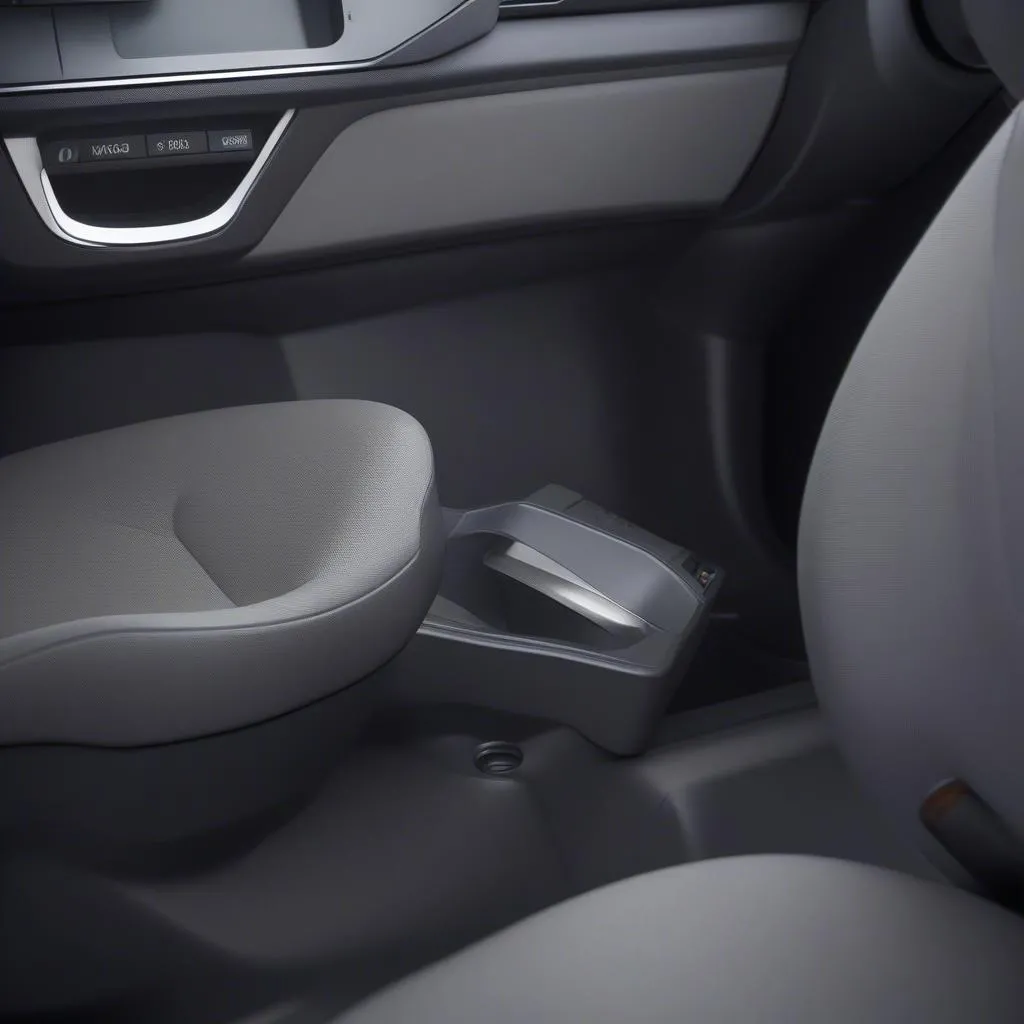You’re getting ready for a road trip in your shiny new Hyundai Ioniq, and you’re excited to use your brand-new diagnostic tool to monitor your car’s performance. But you’re stuck: You can’t find the OBD port! You’re not alone. Many Hyundai Ioniq owners have the same question. Let’s dive into the details to help you locate it.
What Is an OBD Port?
The OBD port, or On-Board Diagnostics port, is a standard connector found in most modern vehicles, including the Hyundai Ioniq. It’s like a gateway to your car’s computer system. It allows you to connect diagnostic tools, such as a “Dealer Scanner,” to monitor your vehicle’s health and performance, and to retrieve diagnostic codes that can help pinpoint potential problems. Think of it like a doctor’s visit for your car, giving you vital insights into its inner workings.
Where to Find the OBD Port on a Hyundai Ioniq
For most Hyundai Ioniq models, you’ll find the OBD port nestled under the dashboard, on the driver’s side. The port is usually located near the steering wheel.
Here are some additional tips for finding it:
- Check the owner’s manual: Your Ioniq’s owner’s manual should have a diagram that clearly shows the OBD port location.
- Look near the fuse box: The OBD port is often positioned near the fuse box, which is usually located under the dashboard.
- Use a flashlight: If you’re struggling to see it, a flashlight can help illuminate the area.
If you still can’t locate it, you can always consult a mechanic or a Hyundai dealership for assistance.
Why Do You Need to Access the OBD Port?
There are many reasons why you might need to access your Hyundai Ioniq’s OBD port.
- Troubleshooting Engine Issues: Diagnose engine problems by retrieving error codes using a diagnostic tool.
- Monitoring Performance: Track your Ioniq’s fuel economy, engine temperature, and other performance metrics.
- Resetting Error Codes: Clear error codes that might be causing your car’s warning lights to illuminate.
- Customizing Your Ioniq: Modify your car’s settings, such as adjusting the transmission shift points, with the help of a diagnostic tool and specialized software.
- DIY Repairs: With the right diagnostic tool and knowledge, you can perform some basic repairs on your Ioniq.
What About the Hyundai Ioniq 5?
The Hyundai Ioniq 5 is a popular electric vehicle, and it’s also equipped with an OBD port. The location of the OBD port on the Ioniq 5 is a bit different than the standard Ioniq. In the Ioniq 5, the OBD port is positioned on the driver’s side, just below the steering wheel, near the driver’s left knee.
 Hyundai Ioniq 5 OBD Port Location
Hyundai Ioniq 5 OBD Port Location
Common OBD Port Issues
While the OBD port itself is usually quite reliable, here are a few issues you might encounter:
- Damaged or Loose Connector: The connector might get damaged from rough handling or exposure to the elements, causing poor connections.
- Clogged Port: Dirt or debris can accumulate in the port, hindering a proper connection.
- OBD Reader Incompatibility: Make sure you have a compatible OBD reader for your Ioniq. Older readers might not be compatible with newer vehicles.
Frequently Asked Questions
1. Can I use any OBD reader on my Hyundai Ioniq?
You can use many different OBD readers on your Ioniq, but it’s crucial to choose one that’s compatible with your specific model year and engine type. Some readers are designed for gasoline engines, while others are for diesel or hybrid vehicles.
2. Where can I find a compatible OBD reader for my Hyundai Ioniq?
You can find a compatible OBD reader at most auto parts stores, online retailers, and even at some major retailers like Walmart or Target.
3. What are the best OBD readers for the Hyundai Ioniq?
Expert Tip: According to Dr. Mark Wilson, author of “The Complete Guide to Automotive Diagnostics,” the “Autel MaxiCOM MK808” is a popular and highly-rated OBD reader that’s compatible with many Hyundai Ioniq models.
4. Can I use my smartphone to connect to the OBD port?
Yes, there are many apps available for smartphones that can connect to the OBD port through a Bluetooth OBD reader. These apps can provide real-time data about your vehicle’s performance, diagnose issues, and even allow you to reset warning lights.
5. What are some recommended OBD apps for the Hyundai Ioniq?
Expert Tip: According to Ms. Emily Carter, a well-respected automotive engineer, “Torque Pro” is a reliable and versatile app that’s highly regarded by many Hyundai Ioniq owners.
6. Is it dangerous to use an OBD reader on my car?
Using a compatible OBD reader on your Hyundai Ioniq is safe and can be beneficial in diagnosing problems and improving your driving experience. However, if you’re unsure about how to use an OBD reader, it’s always best to consult a mechanic or a Hyundai dealership.
Related Articles
Need Help?
If you’re having trouble finding or using the OBD port on your Hyundai Ioniq, or if you need assistance with any other automotive repair, don’t hesitate to contact us. Our team of experienced automotive technicians can provide expert advice and support 24/7.
Contact us via WhatsApp: +84767531508
Conclusion
Finding the OBD port on your Hyundai Ioniq might seem like a simple task, but it can be a bit tricky if you’re not familiar with its location. Understanding its purpose and the many benefits it offers can help you better care for your car and potentially save you money on repairs. Whether you’re a seasoned mechanic or a curious owner, the OBD port is an invaluable tool for understanding and maintaining your Hyundai Ioniq.
Let us know in the comments below if you have any questions or would like to share your experiences using the OBD port on your Hyundai Ioniq!